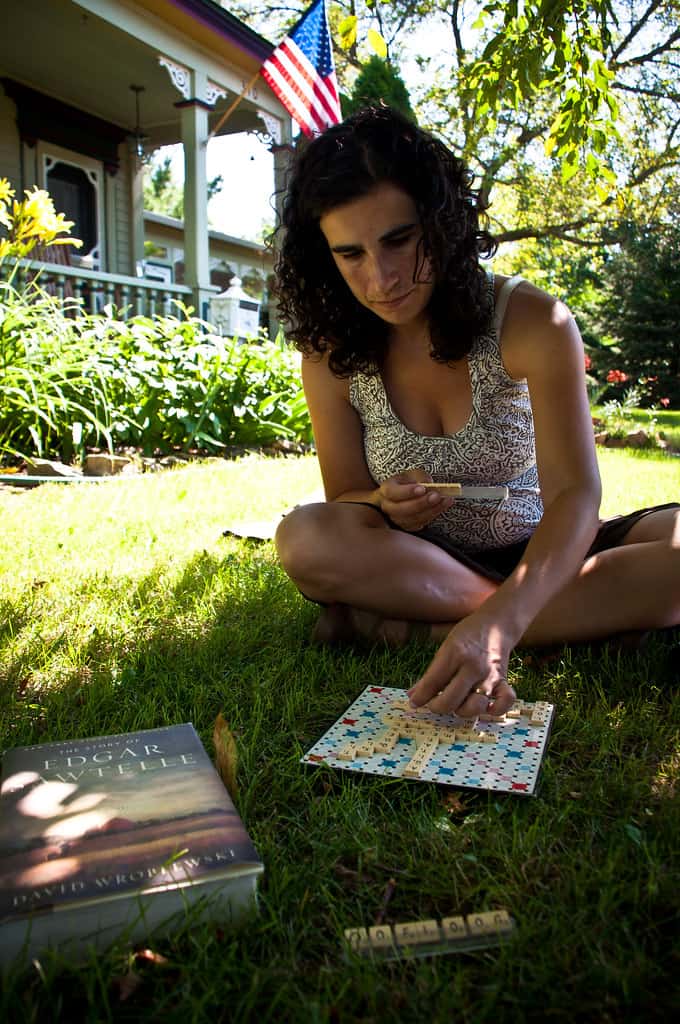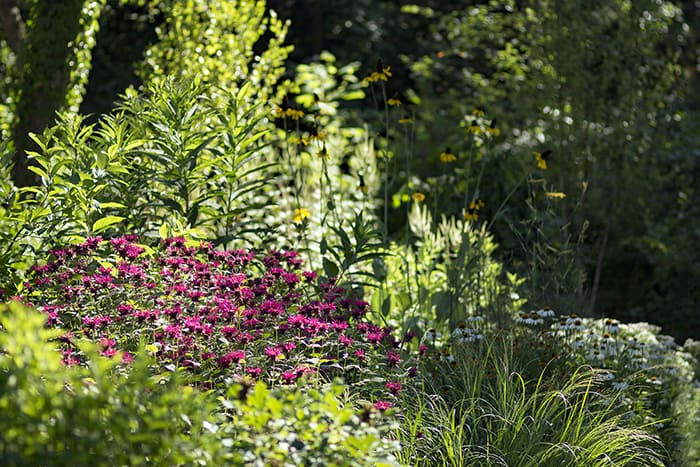CHANGING LANDSCAPES INTO GARDENS: THE LAWN
by Julie Liu
Suburban neighborhoods keep changing. New families move onto older blocks, bringing with them a fresh aesthetic. Throughout the Washington DC suburbs homeowners are downsizing, upsizing, painting, adding front porches and tearing down to rebuild new homes altogether. Neighbors notice and compliment, secretly critique, or find inspiration for their own next project. What doesn’t seem to change so dramatically is the landscape design. Evolved vibrant and modern architecture replaces previous homes yet many landscape designs surrounding newly built homes simply duplicate what was already there.
The curb appeal of the 1950’s, which was dominated by a grand expanse of lawn, often still exists, even in the most modern neighborhoods. Passers-by may compliment the homeowner on their renovation. “Lovely porch,” they might say. But rarely is heard, “Wow, who does your lawn edging?!” or “Nice mulch job!”. I wonder if the suburban landscaping has become so mundane that few even notice it at all? Perhaps it is time to rethink the landscaping in our neighborhoods and create gardens that appeal to our senses, add character and compliment our individual styles, while also contributing to the well-being of our environment and the wild creatures that inhabit it.

Historically as American suburbs developed in the post-WWII era, builders of housing developments sought to unify blocks of homes not only with architectural similarities, but also with ribbons of turf grass. The Front Lawn expanded across property lines to visually eliminate boundaries and encourage conformity. Homeownership, complete with a perfectly coifed lawn, sculpted shrubbery and straight-lined concrete pathways, became a mid-century symbol of progress, achievement and patriotism.
The 50’s landscape trend is part of my own Northern Virginia neighborhood. Front-yardscaping often resembles a static sort of decoration where plants are chosen to sit in a green expanse of lawn despite the change of seasons and evolution of time. Excessive pruning, mowing, leaf blowing and fertilizing are often managed by hired keepers and plants are made to conform to a rigid and unnatural aesthetic. Some local nursery designers plan landscapes according to pre-chosen plant lists, using formulaic combinations repeated from one site to the next while encouraging the use of foreign, non-native plant materials. There is little imagination in that approach and I propose a challenge!
HOA communities are often maintained with a similar uniform approach to architecture and landscaping. While many homeowners prefer the strict adherence to a certain pre-determined neighborhood aesthetic, others wanting to change the acceptable “norm” may find it difficult to achieve without approval by an HOA ruling body. These neighborhoods, which are quickly being constructed throughout the Washington DC region could be a perfect proving ground for establishing a new American garden style that emphasizes native plantings and creative landscape design.
There are many benefits to planting a varied gardenscape. As an extension of the house, the front yard could be a stylish space to relax, recreate and entertain guests. Densely planted with native species, it becomes a healthy ecosystem of plants that nourish pollinators and birds.
If designed smartly, mixed gardens and trees will absorb excessive rainwater, prevent erosion and contribute to the cooling of homes in summer heat. A lawn cannot achieve the same feats. Turf is a slightly better alternative to the dead zones of hardscaping and concrete but offers less in return at the expense of constant care and maintenance. With added perennials and native grasses a community of gardens could act as a part of a linked system of “snack bars” for birds, butterflies and other wildlife.
The lawn continues to enjoy a dominant place in the spaces around our homes. So why not make use of it? Sitting on freshly mowed grass is a delightful way to enjoy the outdoors and we should lounge on the front lawn, run barefooted and picnic with friends and neighbors more often. There is social, recreational and restorative value to manicured grasses in our landscapes, and more so when residents indulge themselves and enjoy it. Sadly short on time and for lack of enthusiasm, having and maintaining a lawn becomes a chore.

Lawns should be enjoyed and used – not merely maintained.
Photo by Sandor Weisz/flickr/CC.
Re-imagine your yard.
- Rather than isolating a wide expanse of your land for turf, use it in combination with many native plants. When treated as a “feature” within our gardenscapes, turf becomes more interesting. Design it to have a creative shape. Consider removing some concrete paths and use lawn as the pathway, or create a checkerboard patio with squares of lawn and stone pavers. Horticulturists and other scientists are breeding seed to withstand extreme drought, poor soils and varied light conditions, thereby offering more earth friendly options.
- Go crazy on your lawn and tear it all out! Plant a no-mow alternative in its place. A low maintenance native grass, such as Buffalo grass or Pennsylvania sedge closely imitates the look of common turf while providing greater benefit to the environment. Less mowing and fertilizing equates to less noise, water usage, air and ground pollution, and maintenance costs.
- Ask garden centers to stock American plants since well-sited North American natives tend to survive local environmental conditions with greater success and less maintenance. Plant regional Virginian natives in your Virginia garden. Enjoy the growth and changes these plants make throughout the seasons.
- Share ideas between neighbors and help each other visualize other possibilities beyond the traditional. Consult with your neighborhood gardeners to learn what plants grow successfully in their native gardens and they will likely share seed and plants with you.
- Visit a local horticulture center and the U.S. National Arboretum to attend lectures and view examples of eco-savvy gardens. Learn the recommended “best practices” for ecologically sound turf and garden maintenance. Be aware of proper chemical use and local laws dictating appropriate timing for application of fertilizers. Better yet, eliminate all chemical use and employ organic methods for garden maintenance.

We are only limited by our imagination. And there’s no better time than now to start creating a beautiful garden that is a reflection of you.
Sources and Resources:
Home Turf: A program offered to residents of Fairfax County to help maintain lawn.
Urban and Suburban Meadows, Catherine Zimmerman. Matrix Media Press, 2010.
“Great Native Graminoids”, Shelly Stiles. American Horticulturist Magazine, April 1995, p. 18-23. (Using native prairie grasses and turf replacement in the landscape is not a new idea!)
A native of Northern California, Julie now resides in Falls Church, VA. Her interests include growing vegetables and flowers, and learning more about non-native plant alternatives and environmentally responsible gardening practices.
